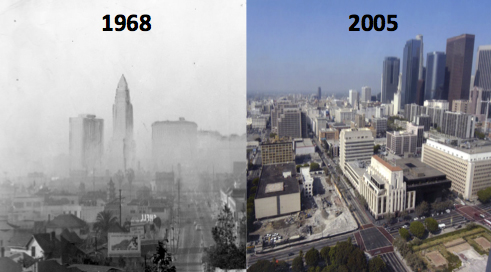Subaru OBD2 Decoding
How We Got Here
The history of automotive emissions monitoring and control began over forty years ago. The skies over major urban areas were becoming polluted with an unhealthy combination of industrial and automotive exhaust gases, which formed a smoky fog, dubbed “smog.” The State of California took steps to reduce these pollutants by forming commissions and administrations to regulate the sources of these pollutants. In 1966, California required basic emission control devices on all passenger cars and light trucks sold within the state. The Federal government followed a couple of years later, but enforcement was difficult to maintain.

The U. S. Congress passed the Clean Air Act in 1970 and created the Environmental Protection Agency to regulate and police the problem of air Few types of diagnostic trouble codes can be more confusing than those dealing with emission problems. From the beginning of mandatory Subaru OBD2 in 1996, more codes have been added and some have changed. Here’s a look at how Subaru of America, Inc.
In the early 1980s, a few on-board computer modules began to appear on passenger vehicles as a way to control fuel injection and emission controls. These systems were implemented mainly for inspection and testing at the end of assembly lines to make sure vehicles left the factory in compliance with California and EPA regulations.
The California Air Resources Board (CARB) mandated that all new vehicles sold in the state in 1988 be equipped with basic onboard diagnostic (OBD) emissions controls. Automakers complied, but each used its own proprietary designs of control modules, data link connectors, sensors, software and actuation devices. Vehicles could only be serviced with that company’s tools and service information, causing much confusion and restricting service by the independent aftermarket.
To begin the road toward uniformity, the Society of Automotive Engineers (SAE) called for standardization, beginning with the data link connector (DLC) and diagnostic test signals. For the next few years, progress was slowly but steadily made toward standardizing the emissions-related portions of OBD2, while leaving the rest of the diagnostics to proprietary discretion of the manufacturer.
